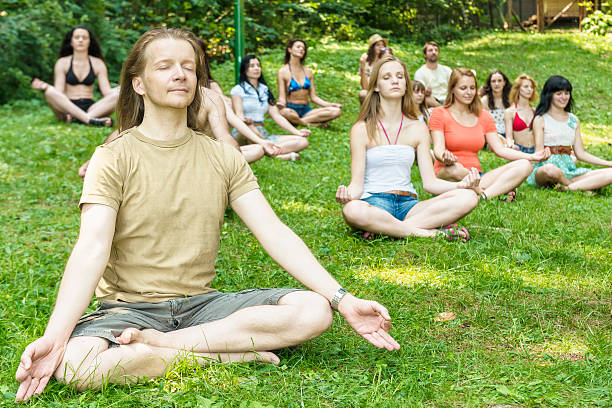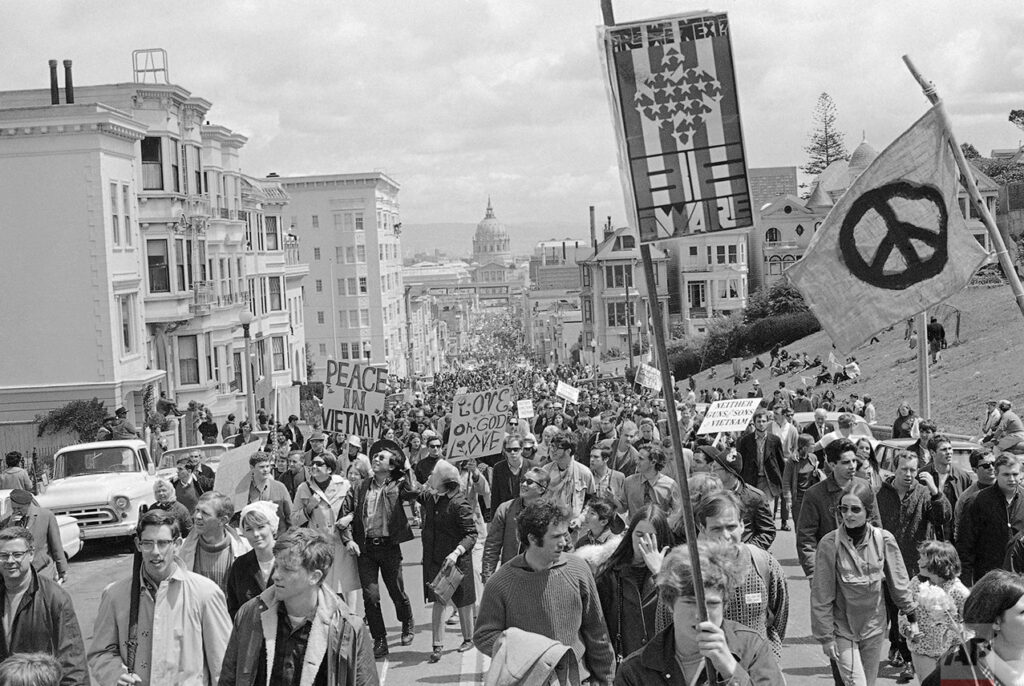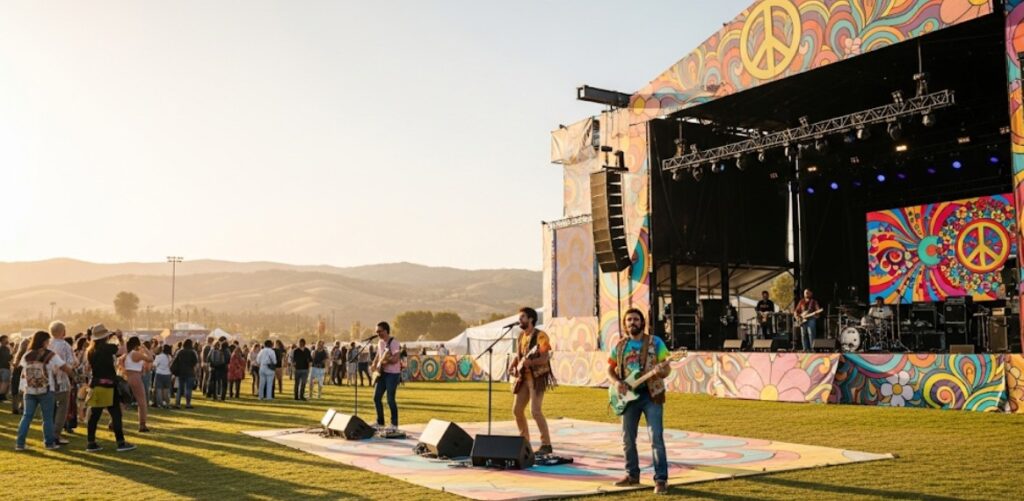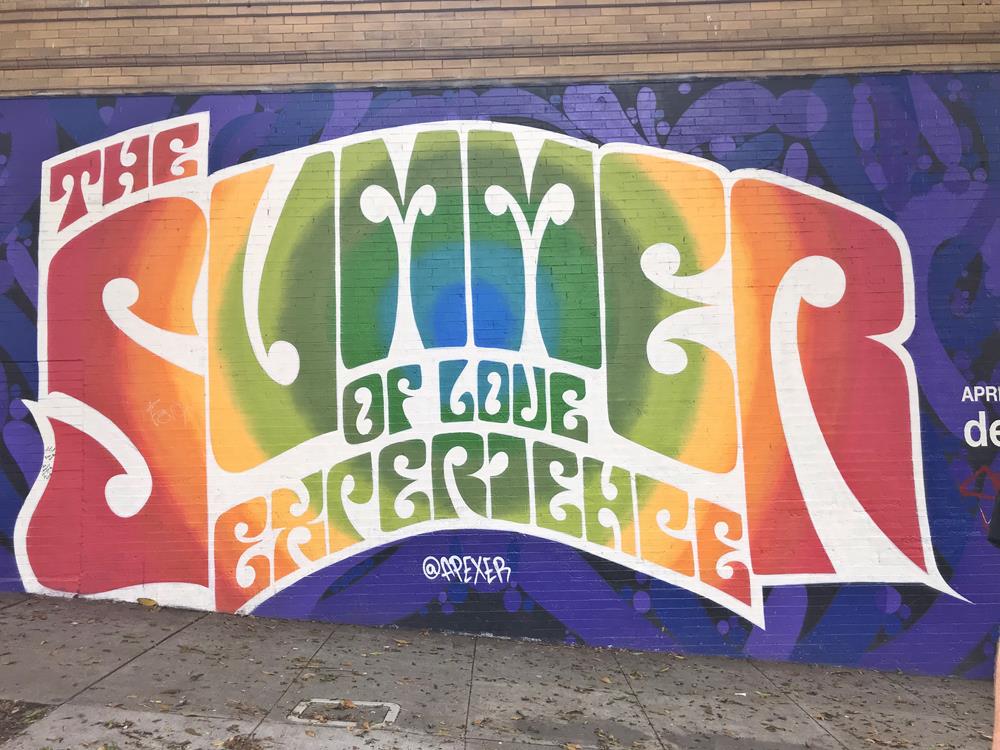Table of Contents
Introduction to the Summer of Love San Francisco
The Summer of Love San Francisco was a landmark event in the 1960s counterculture. Centered in the Haight-Ashbury neighborhood, it attracted over 100,000 young people seeking peace, love, music, and alternative lifestyles. Beyond music and fashion, the Summer of Love represented a movement of social change, spiritual exploration, and communal living that shaped the identity of San Francisco and influenced global culture.
Suggested Image: Archival photo of Haight-Ashbury crowded with hippies in 1967.
Haight-Ashbury: Epicenter of the Summer of Love San Francisco
A Neighborhood Transformed
Affordable housing, eclectic residents, and proximity to cultural hubs made Haight-Ashbury the perfect epicenter for the Summer of Love. Young people, artists, musicians, and activists converged here to create a community based on creativity, freedom, and social experimentation.
Key Features of Haight-Ashbury Hippie Culture
- Communal living arrangements with shared resources.
- Vibrant psychedelic art, murals, and colorful fashion.
- Spiritual experimentation with meditation, yoga, and Eastern philosophies.
- Political activism, including anti-war and civil rights advocacy.
Suggested Image: Modern Haight Street with colorful Victorian houses.
Music of the Summer of Love San Francisco
Music was central to the Summer of Love. Iconic bands such as The Grateful Dead, Jefferson Airplane, Janis Joplin, and Santana performed free concerts that created a communal spirit. Psychedelic rock became the anthem of the era, expressing the ideals of peace, love, and rebellion.
Music Venues and Free Concerts
- Golden Gate Park: Hippie Hill became a gathering place for free performances and community bonding.
- Local Clubs and Halls: Venues like the Fillmore Auditorium hosted experimental concerts blending folk, rock, and psychedelia.
- Musical Festivals: Inspired later events like Woodstock and regional music gatherings.
Suggested Image: Vintage Grateful Dead or Jefferson Airplane concert poster.
Art, Fashion, and Creative Expression
The Summer of Love San Francisco extended beyond music into vibrant visual culture:
- Psychedelic Posters: Bright colors, swirling patterns, and surreal imagery.
- Tie-Dye Fashion: Symbolized individuality, freedom, and rebellion against mainstream norms.
- Murals and Street Art: Many 1967 creations remain as public art honoring peace and love.
- Handcrafted Jewelry and Crafts: Reflected self-expression and artistic creativity.
Suggested Image: Haight-Ashbury murals or tie-dye clothing in local shops.
Spirituality and Alternative Lifestyles
Hippies embraced spiritual exploration as a core aspect of the Summer of Love San Francisco:
- Meditation, yoga, and mindfulness practices inspired by Eastern philosophies.
- Communal living and shared resources encouraged cooperation and personal growth.
- Holistic wellness and herbal remedies reflected experimentation with alternative health practices.

Political and Social Impact
The Summer of Love wasn’t just about art and music—it carried a powerful social message:
- Anti-War Protests: The Vietnam War sparked demonstrations and public activism.
- Civil Rights Advocacy: Many hippies supported equality movements for race, gender, and sexual orientation.
- Environmental Awareness: Ideas of sustainability and nature conservation gained momentum.
- Freedom of Expression: The movement helped shape the progressive, open-minded identity of San Francisco.

Key Figures of the Summer of Love San Francisco
Musicians and Artists
- Janis Joplin: Singer and counterculture icon.
- The Grateful Dead: Pioneers of improvisational and psychedelic rock.
- Jefferson Airplane: Folk rock band symbolizing the era.
Writers and Activists
- Allen Ginsberg: Beat poet advocating for free expression.
- Timothy Leary: Psychedelic researcher and proponent of LSD for consciousness expansion.
- Local Community Leaders: Organized events, street performances, and social programs.
Suggested Image: Portraits of Janis Joplin, Grateful Dead, or Allen Ginsberg.
Visiting the Summer of Love San Francisco Today
Haight-Ashbury remains a living legacy of the 1967 Summer of Love:
- Haight Street: Explore vintage shops, record stores, and unique cafes.
- Hippie Hill: Enjoy live music, outdoor gatherings, and historical significance.
- Street Art and Murals: Celebrate the colorful counterculture heritage.
- Historic Homes: Victorian houses inhabited by famous musicians and artists.
- Annual Events: Haight-Ashbury Street Fair and cultural celebrations maintain the hippie spirit.
Suggested Image: Tourists exploring Haight Street and Hippie Hill today.
Global Influence of the Summer of Love San Francisco
The Summer of Love shaped global culture:
- Inspired Woodstock and other international music festivals.
- Fashion trends like tie-dye and bohemian styles spread worldwide.
- Countercultural ideals influenced modern social movements, environmentalism, and alternative lifestyles.
- Spiritual practices such as yoga and meditation gained mainstream acceptance.

Tips for Experiencing the Summer of Love in San Francisco
- Visit Haight Street early to enjoy a peaceful stroll.
- Explore local shops for vintage clothing and records.
- Walk or bike to Golden Gate Park for Hippie Hill gatherings.
- Attend a street fair or guided historical tour.
- Photograph murals and street art to capture the neighborhood’s creative spirit.
FAQ: Summer of Love San Francisco
Q1: What was the Summer of Love?
The Summer of Love was a 1967 cultural gathering in San Francisco that brought thousands together to celebrate peace, love, music, and counterculture ideals.
Q2: Where did it happen?
Primarily in Haight-Ashbury, with key activities at Hippie Hill in Golden Gate Park.
Q3: Who were some notable figures?
Janis Joplin, The Grateful Dead, Jefferson Airplane, Allen Ginsberg, and Timothy Leary.
Q4: How did it influence culture?
It shaped music, fashion, art, political activism, spiritual practices, and alternative lifestyles globally.
Q5: Can I experience the Summer of Love today?
Yes, Haight-Ashbury, street murals, Hippie Hill, vintage shops, and annual festivals preserve its legacy.
Q6: Why is it called the Summer of Love?
The term reflects the emphasis on peace, love, and communal living during the cultural gathering in the summer of 1967.
Conclusion: The Lasting Legacy of the Summer of Love San Francisco
The Summer of Love San Francisco remains one of the most influential cultural events in modern history. Its blend of music, art, activism, spirituality, and fashion transformed the city and influenced global counterculture. Today, Haight-Ashbury, Hippie Hill, murals, and festivals allow visitors to experience the spirit of freedom, creativity, and love that defined this iconic moment.


Leave a Reply
You must be logged in to post a comment.